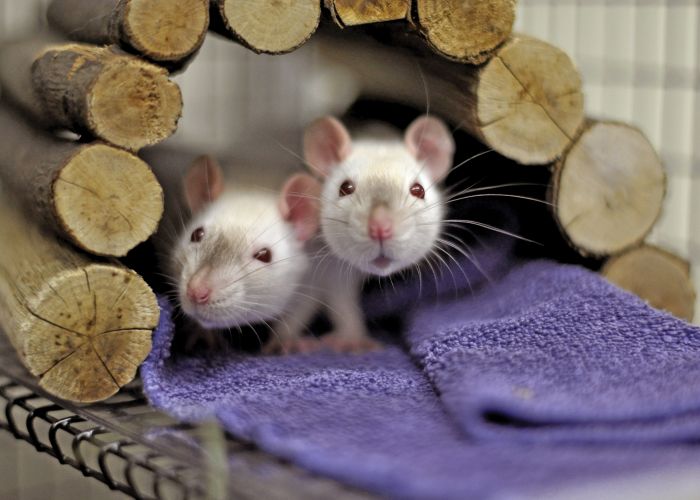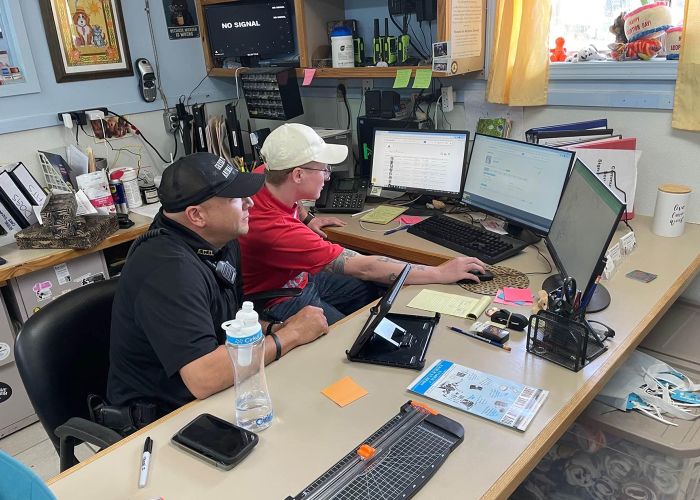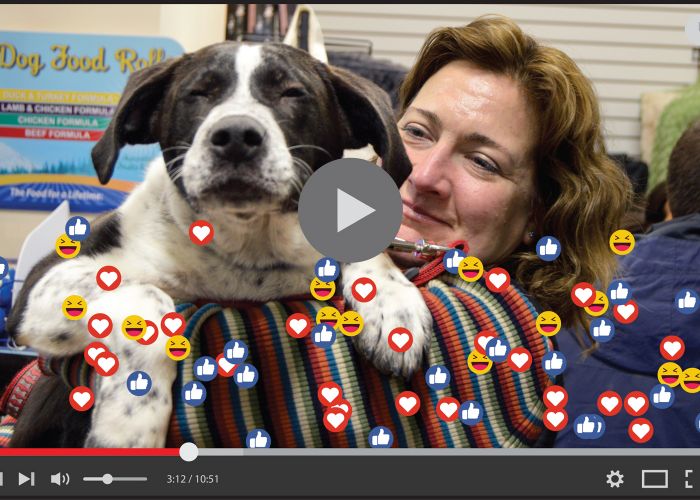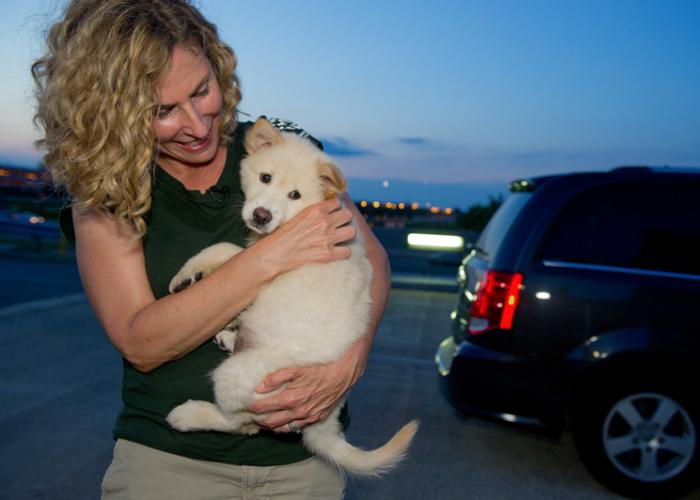Block by block
Reaching your community means getting outside your doors and knocking on theirs
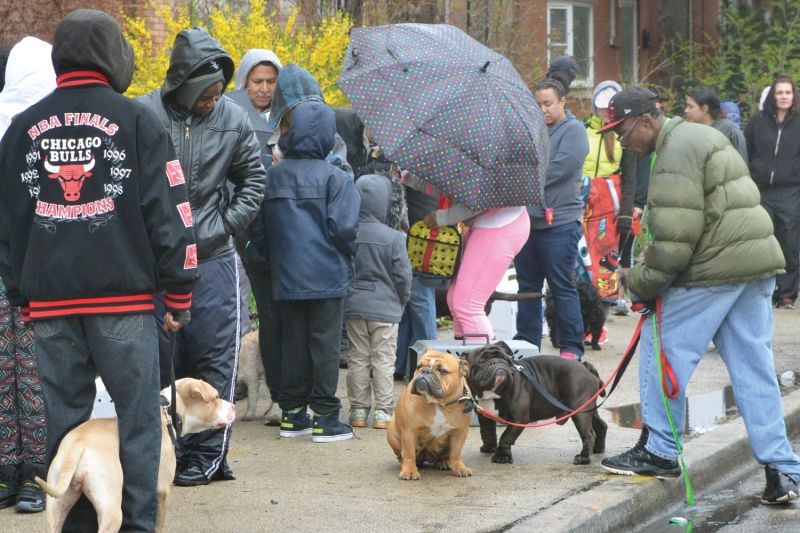
Back when Matt Piccone worked for a cable company in Rochester, N.Y., his job was to disconnect people who were stealing service. “I was in and out of 200 yards a day unannounced,” he says. In those yards and back alleys, he found more than illegal cable hookups: He saw dogs tied up all day, animals in need of veterinary care and stray cats struggling to care for their litters.
One cold winter day, Piccone was perched atop a telephone pole, poised to disconnect a household’s illegal cable, when he looked down into the yard and saw two dogs shivering in the cold. That was his breaking point. He climbed down from the pole, called his wife and said he was quitting that day. Then he knocked on the door of the man whose cable he’d just cut and said, “Can I talk to you about your dogs?”
The next thing Piccone knew, he and his dad were building insulated doghouses in Piccone’s garage to give to local residents. They were building fences so dogs could run free in their yards, and distributing straw so outdoor dogs could stay warm during Rochester’s brutal winters. PAWS (Providing Animal Welfare Services) of Rochester was born.
Before long, Piccone had morphed from bad guy to hero among neighborhood residents. As he worked to help people with their pets, suddenly, instead of taking something away, he was giving. “I’ve never been more respected or appreciated in my entire life,” he says.
Last year, Piccone attended a training workshop for Pets for Life (PFL), an HSUS program focused on reaching underserved communities. This summer, he’s applying what he learned at the workshop and during his experiences with PAWS, in a new role. As outreach strategies manager for Emancipet, Piccone is now coordinating community outreach to pet owners in Austin, Texas.
And it all started by knocking on one door.
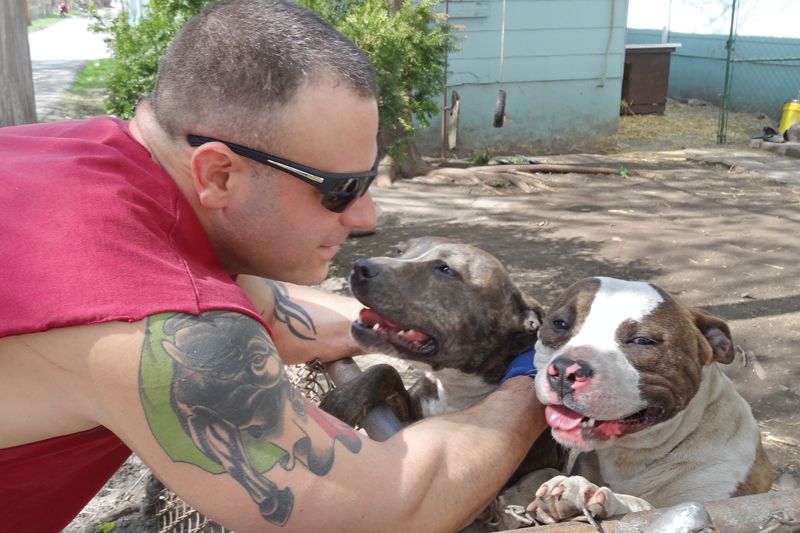
Beyond Shelter Walls
Through his work for the cable company, Piccone stumbled upon something many people who work in animal welfare never see—the overlooked communities of animals and pet owners who never set foot in a shelter or visit a vet. Due to lack of transportation, lack of resources and sometimes a simple lack of awareness, many families never get connected with groups and services that could help them. And until recently, most animal welfare groups didn’t do much to correct that.
For Amanda Arrington, finding out about these overlooked areas was like pulling the string of a sweater; the more she pulled, the more the picture unraveled, showing her how a shivering dog in a backyard might be connected to other stressful problems in the pet owner’s life, rather than an absence of caring.
During her tenure as North Carolina state director for The HSUS from 2008 to 2010, Arrington was involved in multiple programs that exposed her to the ways in which underserved communities struggle. Hurricane Katrina had done a lot to throw light on the issue, and The HSUS’s follow-up work in the Gulf Coast went deeper.
Arrington was no stranger to service deserts. As an advocate with the Coalition to Unchain Dogs, an organization she founded in 2006, Arrington had been going door to door in North Carolina neighborhoods, sharing information and providing fences, doghouses and other basic resources for pet owners.
Arrington notes that it had become an urban legend of sorts among animal welfare organizations that the people who lived in certain communities or were members of certain demographic groups did not want to spay or neuter their pets, or chose not to get their animals vaccinated. Research conducted during the Gulf Coast project and in other regions showed that, in fact, many of the people in these communities simply lacked resources, and no one had bothered to reach out to them.
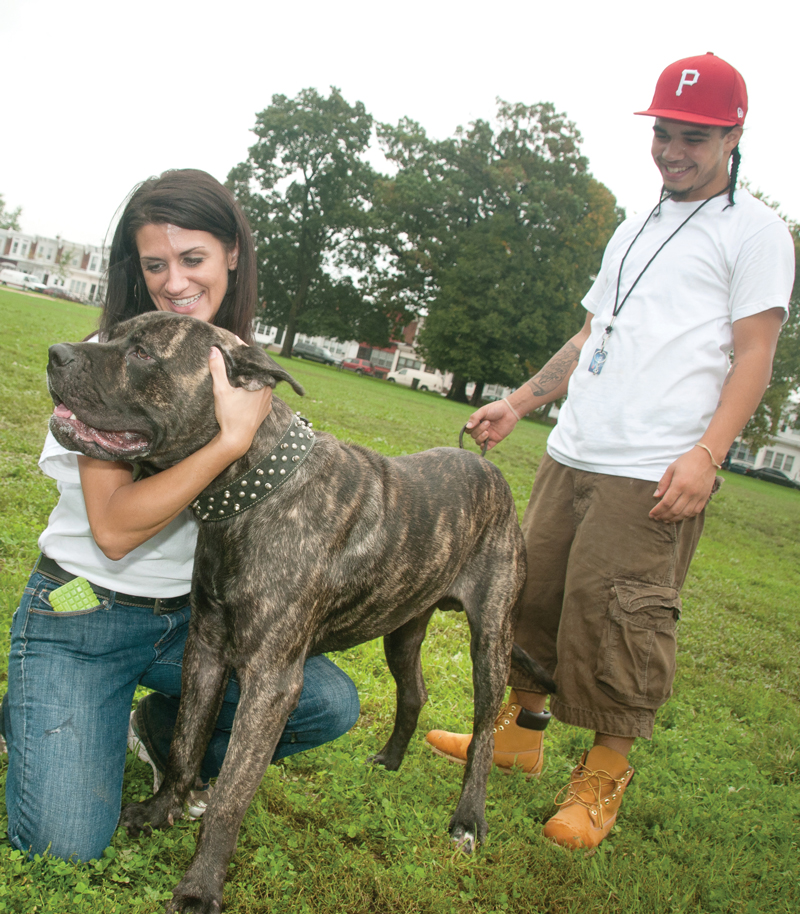
“It was really unbelievable how many animals were unaltered and how many had never been vaccinated, but at the same time how many people were interested in and wanted those services,” says Arrington, who now leads PFL.
It was also evident that when it came to addressing these inadequacies, the same old methods weren’t going to work. Programs couldn’t just swoop in with big promises and pull up stakes after a short initial effort. The problem of poverty touches every element of people’s lives, and it continues to do so long after a mobile spay/neuter vehicle pulls away or an outreach event wraps up.
Kenny Lamberti, now the program manager for PFL, saw the reality first as a kid growing up in a rough part of Boston, then later as a teacher and social worker in communities like the one where he’d grown up. “So many programs would come in with a good and righteous plan,” says Lamberti, “but they were always groups from the outside … with no real connection to the community. … It never worked.”
Eventually, Lamberti merged his dedication to social change with his love of dogs (as a teacher, he’d spent his summers working as a dog trainer). After hearing Arrington’s vision for the nascent PFL initiative in 2011, he joined The HSUS and went to work in Philadelphia, a city that has served as both a testing ground and an incredible success story for the program. It was there that PFL staff shaped the community-organizing model that’s succeeding beyond everyone’s wildest dreams.
Lock the Block
Today, The HSUS operates PFL programs in Atlanta, Chicago, Los Angeles and Philadelphia. Meanwhile, local groups in 26 mentorship communities have taken up the PFL model with in-depth training from HSUS staff and, in most cases, grants from PetSmart Charities. Data shows that in target communities, roughly 89 percent of pets are unaltered at the outset—nearly the reverse of the national average. But when programs using the PFL model take services and information into these communities, eventually they’re able to spay or neuter roughly 78 percent of previously unaltered pets, bringing their percentages of altered pets equal to the national average.
But it’s not a change that can happen overnight, and it’s easy to get overwhelmed, warns Lamberti. “When you work in truly underserved communities where there’s a lot of poverty, the kind of suffering you see is pretty profound. … It can overwhelm you, and you want to fix it. You want to do too much too fast.”
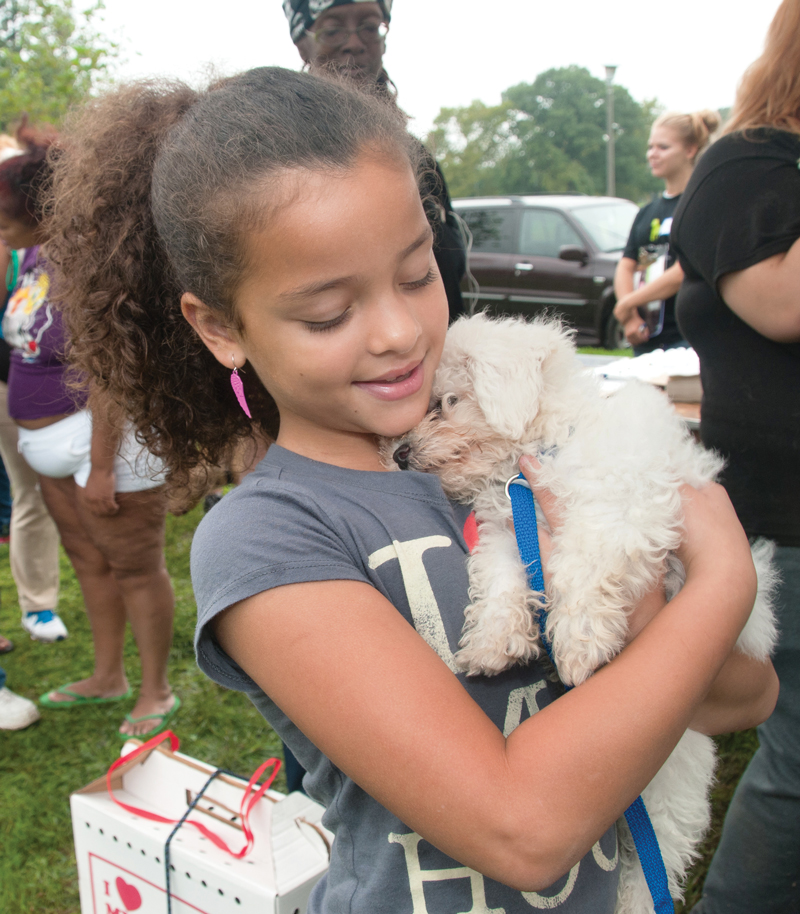
In Philadelphia, for example, the PFL team started out looking at an entire ZIP code worth of houses. “It was overwhelming for the people doing the work, and we weren’t able to connect at that real granular level with people in the community that we needed to be effective,” says Lamberti. So they narrowed their scope to a neighborhood, and found it was still too much. In the end, they shrunk their target to a single block, deciding they were “going to stay on this block until all the people there know us, know what our program’s about and trust us, and until we feel like we’re collaborating and not just there giving services.” Indeed, that approach allowed them to create the kind of sustained, meaningful impact they had envisioned.
The philosophy of equal partnership with the community is key to everything PFL does, including the language used by staff. Service recipients are “partners.” Staff don’t “educate” residents; they share information.
Arrington and Lamberti underscored the importance of that mentality last November during a training in Philadelphia for representatives of new mentorship communities that had received grants from PetSmart Charities to implement the PFL model.
PFL’s basic strategy for embedding in a community is, at its essence, simple—just take it house by house, block by block. It all starts with being seen—driving down the street, walking around in the community, starting conversations and letting people get to know you.
“Eventually, the story tells itself if you just keep showing up,” says Lamberti, who told the new mentorship group leaders that he’ll often approach people in the neighborhood and simply introduce himself. If they have a dog with them, he’ll tell them about his own dog and just go from there. He emphasizes that it’s important to not start with an agenda other than making friends and listening: Give residents time to get to know you, then when they know who you are, they’ll tell you what it is they need. (PFL outreach workers routinely keep small supplies of things like flea and tick medication, collars and leashes at the ready so they can hand them out on the spot.)
A key component of PFL’s operational strategy is an approach they call “lock the block,” developed early on when the Philadelphia team saw the value of focusing on a small target area. Lamberti and his team found it’s best to focus on a single street or block at a time (though in areas like Atlanta, where neighborhoods are more spread out, the definition of a “block” can change). Staff look to the next geographic area only when the initial area is completely covered, every door has been knocked on, and PFL staff and volunteers have established their identity and purpose. Only then do staff look to the next target area—and they don’t pull up stakes. While focusing more time on the new target area, they keep an ongoing presence in previously covered areas, which can be as simple as driving down the street and greeting residents to show they are still around. “By then, the residents know how to contact us if anything’s needed,” Arrington says, “or other residents who have worked with us will refer new people on the block to us.”
That ongoing presence in the neighborhood means that word often travels faster than the team does: According to Jill Kline, vice president of community impact programs for the Wisconsin Humane Society in Milwaukee, a PFL mentorship city, “on some of the blocks where they don’t know us as well, it’s, ‘Hey, are you the dog ladies?’ … It’s a really warm reception.”
A New Attitude
Arrington says the problems facing pets in underserved communities are not as much about the residents as they are about systemic societal problems—like poverty— and in some cases, outdated attitudes among those in animal welfare who have bought into an old idea about what certain communities are like. In reality, she says, “it’s just about access and information and affordability, and that’s what we as the providers are actually able to change. We can change how we approach people. We can change the affordability. We can remove barriers to access.”
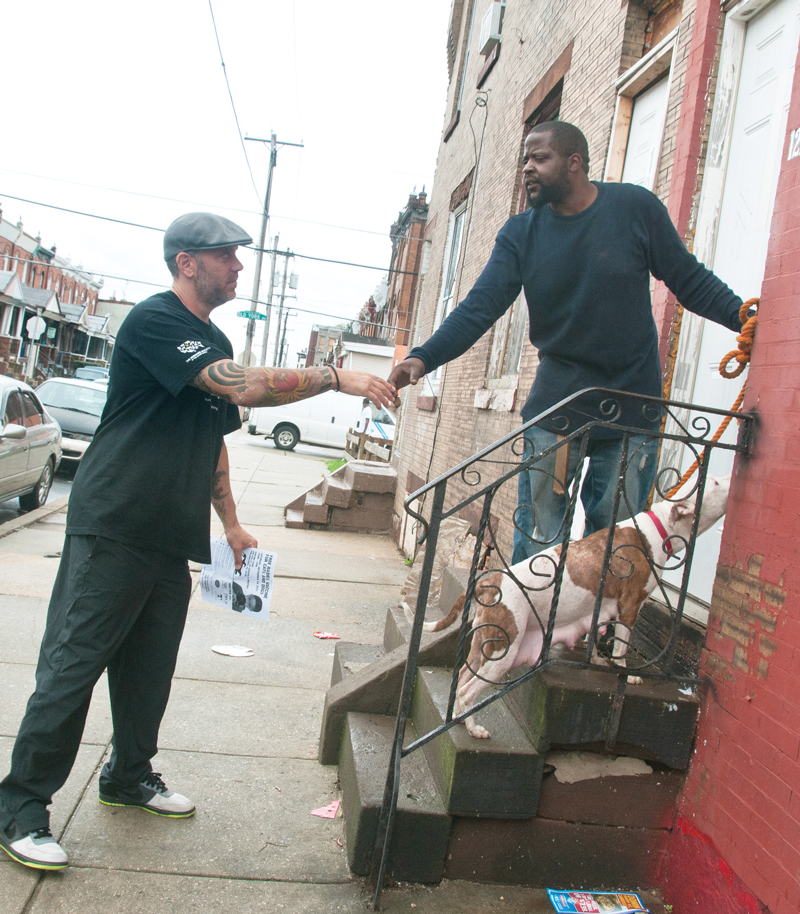
Jacob Stroman, programs director for the Jefferson SPCA, which serves as the PFL mentorship organization in Jefferson Parish, La., agrees. He says the time has come to take a step back and re-examine our “expectations of what proper pet ownership is and who is ‘good enough’ to have a pet.” It’s not just a matter of income or geographic location, he cautions. “Being rich or being poor never designates how much affection or love there is within a family, [and the same goes for the] family pet.”
Arrington says that PFL-type programs also represent a major shift in thinking for organizations that are used to one-off events or short-term projects. “I think it’s counterintuitive for animal welfare, where we think, ‘OK, we go in, we have a set amount of time, and then we’re done.’ That’s just not how this works.” Organizations should instead plan to imbed themselves in a community and calculate what services they can reasonably provide to a specific area on a sustained basis.

Another aspect of these programs is that they focus on cultivating local involvement. Residents don’t just receive services, they become ambassadors and volunteers, helping staff spread the word. “That’s part of the goal, too,” adds Arrington, “to get more and more people interested and invested and serving their communities comprehensively.”
Arrington says PFL is just as much about supporting people as it is about helping animals. As an example, she tells the story of a man in Chicago who brought his dog to PFL’s free training classes.
“He had been sort of struggling with his dog. I think they’d gone to three or four of our nine-week sessions, and the dog hadn’t passed yet, but finally he did.” Later, when staff visited the man at his house, they saw he had the dog’s certificate of completion hanging on his wall. Then he told the PFL team that watching his dog struggle to learn but finally succeed had inspired him in his own life. He was going back to school, to get his own GED.


